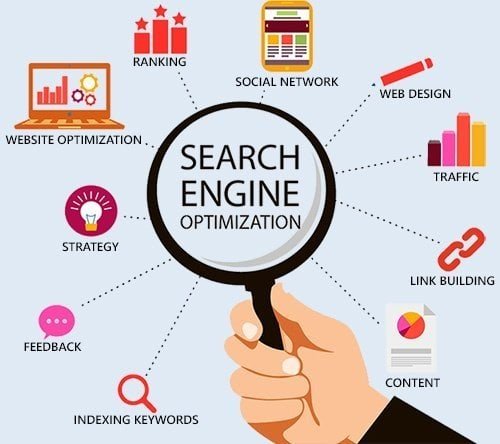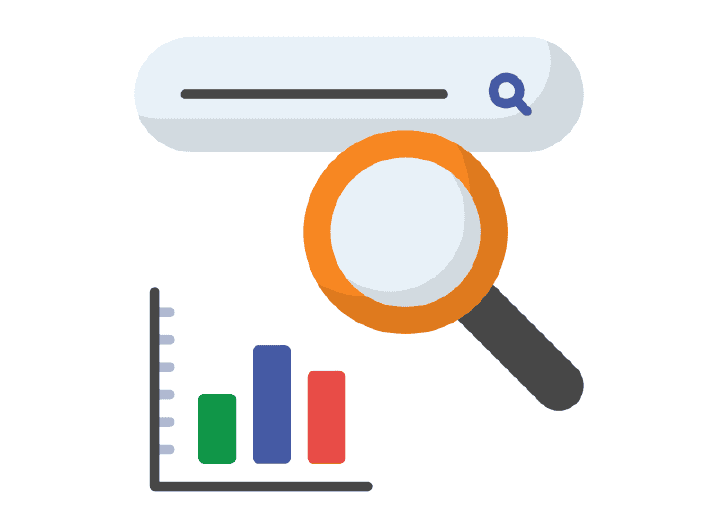Buckle up, digital marketing warrior! The SEO landscape is shifting faster than ever before, and if you’re not using data to fuel your strategy, you’re falling behind. This isn’t your grandma’s SEO – we’re talking about leveraging cutting-edge insights to skyrocket your rankings, crush your competition, and turn those clicks into cold, hard cash.
Ready to unlock the power of data-driven SEO? Let’s dive in!
Why You Can’t Ignore Data-Driven SEO
Forget gut feelings and guesswork! Data-driven SEO is the only way to truly understand what your audience wants, how they search, and what makes them convert. Here’s why you absolutely need it:
- Laser-Focused Targeting: By analyzing search trends and keywords, you can pinpoint exactly what your ideal customers are looking for and optimize your content accordingly. No more wasted effort on content that falls flat!
- Unleash the Power of User Behavior: Data reveals the secrets of how people interact with your website. Armed with this knowledge, you can tweak and optimize your website structure to keep visitors engaged and moving towards conversion. Say goodbye to high bounce rates and hello to conversions!
- Continuous Improvement Is Your Superpower: Data-driven SEO isn’t a one-and-done deal. It’s about constantly monitoring your metrics, identifying areas for improvement, and making iterative adjustments for peak performance. Think of it as your secret weapon for staying ahead of the curve!
Mastering SEO Analytics: Your Data-Driven Command Center
Think of SEO analytics as the control panel for your digital marketing success. It’s where you gather the crucial insights that inform every decision you make. But don’t worry, it’s not as complicated as it sounds! Here’s how to become an SEO analytics master:
Step 1: Embrace the Power of Insights
SEO analytics gives you the raw data behind how your website performs in the vast ocean of search results. It’s like having a backstage pass to Google, revealing where your site shines and where it needs a little TLC. By understanding this data, you can:
- Target Keywords Like a Pro: Discover the keywords that will actually bring in the right traffic – the kind that converts!
- Unlock the Secrets of User Behavior: Learn how people are navigating your website, what they’re looking for, and where they’re getting stuck.
- Boost Your Backlink Game: Identify opportunities to build high-quality backlinks that will send your authority (and rankings) soaring!
- Become Google’s Favorite: Optimize your site to meet Google’s ever-changing algorithms and watch your rankings climb!
Step 2: Put SEO Analytics into Action!
Now it’s time to turn those insights into tangible results. It’s like fine-tuning a high-performance engine – every adjustment can make a huge difference! Here’s the game plan:
- Set Crystal-Clear Goals: What do you want to achieve with your SEO efforts? More traffic? More leads? More sales? Make sure your goals are specific, measurable, and aligned with your overall business objectives.
- Google Analytics is Your Free Best Friend: This powerful suite of tools will track your website traffic sources, keyword rankings, and user behavior – giving you a clear picture of what’s working and what’s not.
- Unleash the Keyword Power of SEMrush: Want to dig deeper into keyword analysis? SEMrush will reveal hidden opportunities and help you dominate your niche.
- Embrace the Continuous Improvement Loop: Remember, data-driven SEO is a marathon, not a sprint! Regularly analyze your data, make adjustments, and watch your results skyrocket over time.

Conversion Rate Optimization: Turn Clicks into Customers!
Getting traffic to your website is only half the battle. The real magic happens when you turn those visitors into loyal customers! That’s where Conversion Rate Optimization (CRO) comes in.
Think of CRO as the ultimate user experience makeover for your website. By making it easier for visitors to find what they need and take action, you can significantly boost your ROI. Here’s the deal:
- Stop Wasting Traffic: What’s the point of driving tons of traffic to your site if they’re not buying anything? CRO ensures that your increased traffic translates into real results – more leads, more sales, and more profits!
- Close the Conversion Gap: CRO bridges the gap between a website visit and a conversion, turning casual browsers into paying customers.
The Amazing Benefits of CRO:
- Meaningful User Interactions: A well-optimized website provides a smooth, enjoyable experience that keeps visitors engaged and coming back for more.
- ROI That Makes You Dance: Instead of pouring money into attracting more traffic, CRO helps you squeeze every ounce of value from your existing visitors, leading to a higher ROI.
- Crush Your Competition: A user-friendly website with a stellar CRO strategy will make you stand out from the crowd and attract more customers.
Optimize Your Conversion Rates Like a Pro:
- Know Your Audience Like a BFF: Understanding your audience’s needs, desires, and online behavior is crucial for successful CRO. Tailor your content and website design to their specific preferences, and watch the conversions roll in!
- A/B Testing is Your Secret Weapon: Want to know what really works? A/B testing allows you to compare different versions of a webpage to see which one performs better. It’s like having a scientific experiment for your website!
- Track Your Metrics Like a Hawk: Regularly analyze key metrics like bounce rate, time on site, and conversion rate to identify areas for improvement.
SEO Content Ranking: Climb the Google Ladder with Data-Driven Content!
In the world of SEO, content is king! But it’s not enough to just churn out any old content – you need content that’s optimized to rank high in search results and attract your target audience.
Data-driven content is the key to unlocking SEO success. Here’s how to create content that Google (and your audience) will love:
- Keyword Research is Your Compass: Keywords are the foundation of SEO content. By analyzing data on search volume, competition, and user intent, you can choose the right keywords to target and attract the right audience.
- Technical SEO is Your Secret Weapon: Optimize your website’s technical elements, such as page speed, mobile compatibility, and structured data, to boost your ranking potential and provide a seamless user experience.
- Compelling Content is King: Create engaging, informative, and valuable content that answers your audience’s questions and solves their problems.
Dominate the SERPs with These Data-Driven Content Strategies:
- Unleash the Power of Keyword Research: Use data to identify the most relevant and valuable keywords for your target audience.
- Optimize Your Technical Foundation: Ensure your website is fast, mobile-friendly, and technically sound to improve your rankings and user experience.
- Create Content That Converts: Focus on creating high-quality, user-centric content that provides value and answers your audience’s questions.
Supercharge Your SEO Strategy with Data-Driven Techniques!
While creative content is essential, data is the backbone of a truly effective SEO strategy. By embracing data analysis, you can make informed decisions, optimize your efforts, and achieve remarkable results.
Data empowers you to understand user behavior and search patterns, allowing you to tailor your content and website to meet their specific needs. It’s like having a roadmap to SEO success!
Boost Your SEO with These Data-Driven Steps:
Step 1: Gather Your Data: Collect relevant data from various sources to get a comprehensive picture of your SEO landscape. Step 2: Turn Insights into Strategy: Analyze your data to identify patterns, trends, and opportunities. Use these insights to inform your SEO strategy and make data-driven decisions. Step 3: Execute and Test: Implement your strategic changes and monitor key performance indicators (KPIs) to measure the impact. Step 4: Evaluate and Refine: Analyze the results of your efforts, identify areas for improvement, and refine your strategy for continuous growth.

SEO Trends: Stay Ahead of the Curve!
The world of SEO is constantly evolving. To stay ahead of the competition, you need to be aware of the latest trends and adapt your strategy accordingly. Here’s a sneak peek at what’s coming in:
- Voice Search Optimization: As voice assistants like Siri and Alexa become more prevalent, you need to optimize your content for conversational search queries.
- Artificial Intelligence (AI) is Taking Over: AI is playing an increasingly important role in search engine algorithms. Tailor your content to AI-driven search suggestions to boost your visibility.
- Mobile-First Indexing is Here to Stay: With the majority of internet users accessing the web from mobile devices, Google prioritizes mobile-friendly websites. Make sure your site is optimized for mobile to avoid getting penalized.
Your Data-Driven SEO Roadmap
Embrace the power of data and watch your SEO strategy soar! By focusing on technical SEO, user-centric content, and data-driven analytics, you can conquer the SERPs and achieve lasting success.
Remember, staying ahead of the curve is not a luxury – it’s a necessity! Adapt your SEO practices to the latest trends, and watch your website become an unstoppable force in the digital world.
Conclusion
Data-driven SEO is no longer a luxury; it’s a necessity for anyone who wants to succeed online in and beyond. By embracing data-driven strategies, you can create a powerful SEO strategy that drives traffic, boosts conversions, and helps you achieve your business goals.
FAQs
How do I measure the success of my SEO strategy? SEO success is measured by a variety of factors, including organic traffic growth, keyword rankings, conversion rates, and engagement metrics such as time on page and bounce rate. You should also track your website’s visibility in search results, the number of indexed pages, and the strength of your backlink profile.
What are the most important SEO metrics to track? The key SEO metrics to focus on include organic traffic, keyword rankings, conversion rates, backlink profile quality, and engagement metrics like bounce rate and time on page. Additionally, it’s crucial to monitor click-through rates (CTR) from search engine results pages (SERPs), domain authority, and your website’s technical SEO health, including site speed and mobile-friendliness.
What tools can I use to analyze the success of my SEO strategy? There are several powerful tools available to help you analyze your SEO performance. Google Analytics provides insights into organic traffic, user behavior, and conversion rates. Google Search Console offers data on keyword rankings, indexing issues, and backlink profiles. For a more comprehensive analysis, SEO platforms like SEMrush provide detailed information on keyword performance, competitor insights, and backlink audits.

